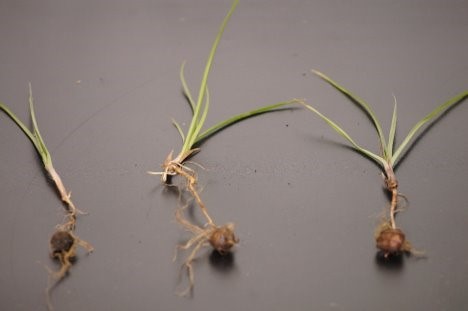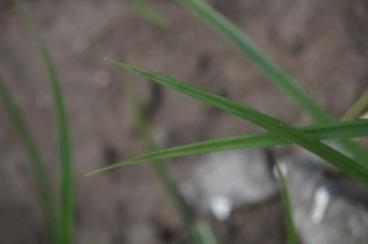Yellow Nutsedge (Cyperus Esculentus)

Cyperaceae (Sedge family)
Group: Monocot (Sedge)
Perennial sedge that form tubers at end of rhizomes, native of North America. It is commonly found in wet and dry habits including cultivated fields, pastures, turf, landscapes, and disturbed areas. Yellow nutsedge is a problem weed in rice fields. Seedling is small, inconspicuous, and not often found.
Leaf blades are bright green, narrow or linear, grass-like with parallel venation, 1/16 to 7/16-inches wide, basal blades usually reaching or surpassing the seed head. Leaf tips are long and gradually taper to a thin, sharp point. Leaves are produced at the base in pairs of three (three-ranked), forming a sheath around the stem.
Stem is three-angled or triangular in cross section, from 6 inches to 2-1/2 feet tall.

Flower or seed head has 3 to 7 conspicuous leaves below, yellowish-brown to golden-brown, 1-5/8 to 6 inches long, and 1-7/8 to 6 inches wide. Seed heads have 5 to 10 unequal stalks each bearing 12 to 50 thin, spreading spikes. Seed is brown, less than 1/16-inch long, and three angled. Tubers are smooth, round shaped, at the end of rhizomes, with neutral or sweet almond taste.
Propagation is primarily by tubers and secondarily by seed. Tubers can remain viable for more than 10 years.
